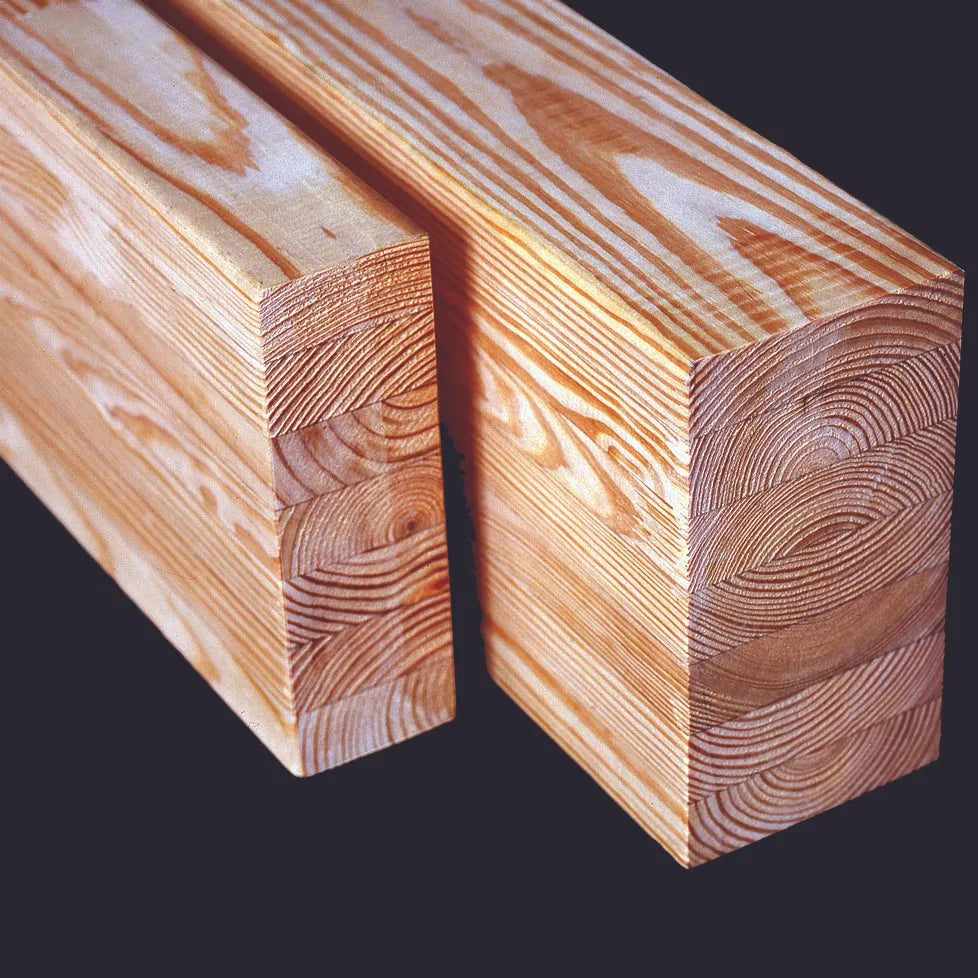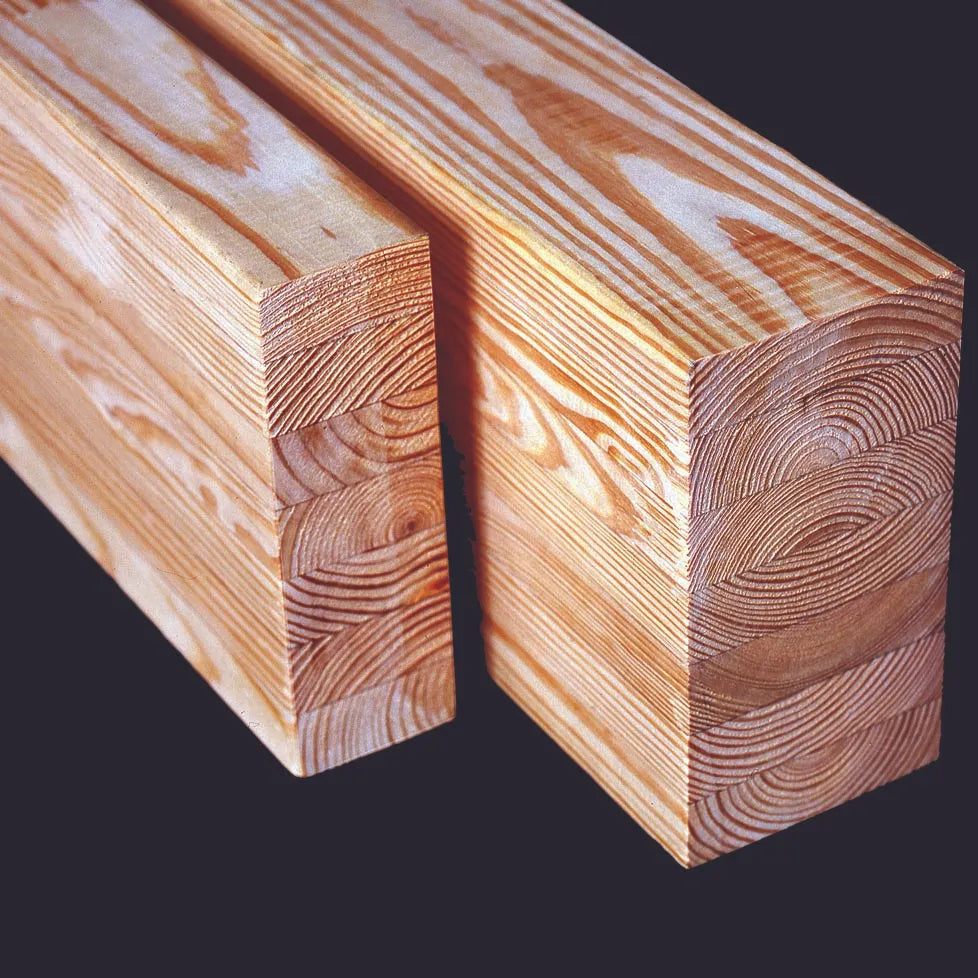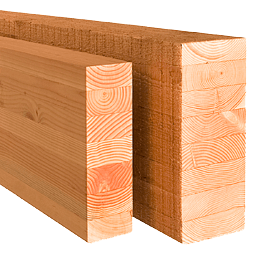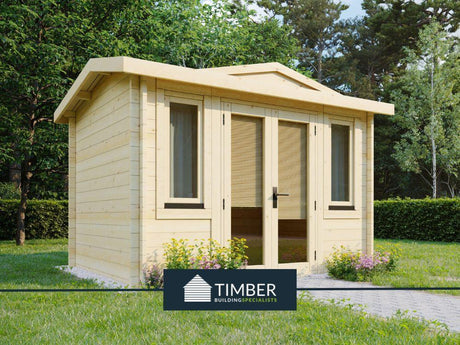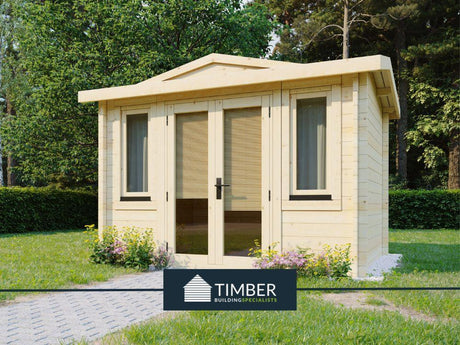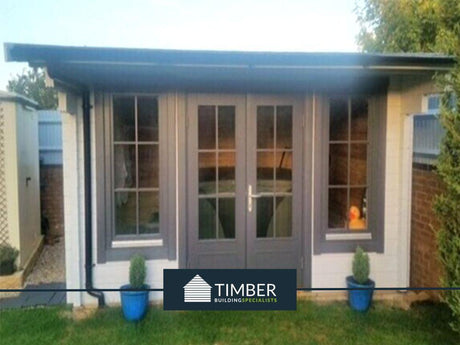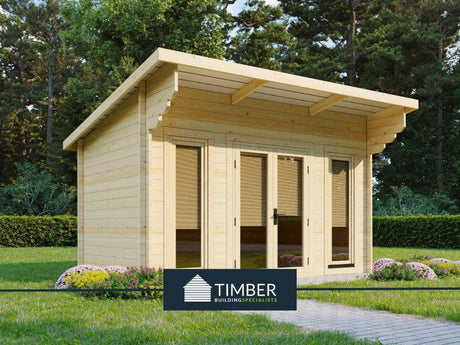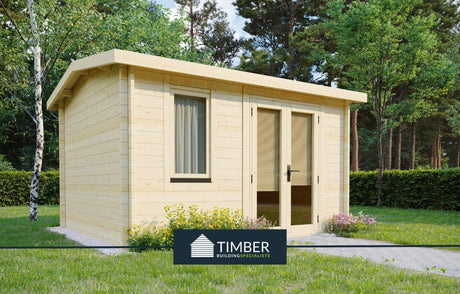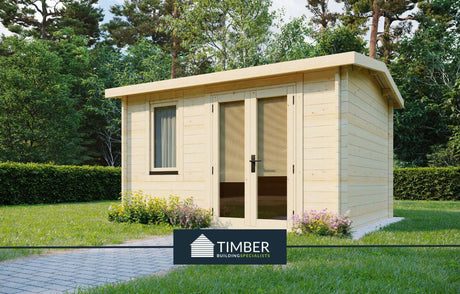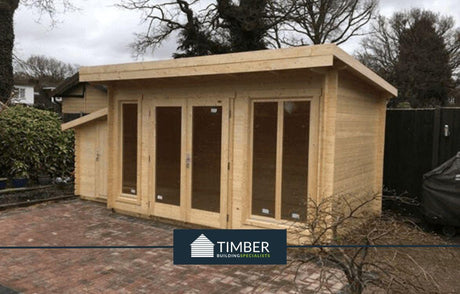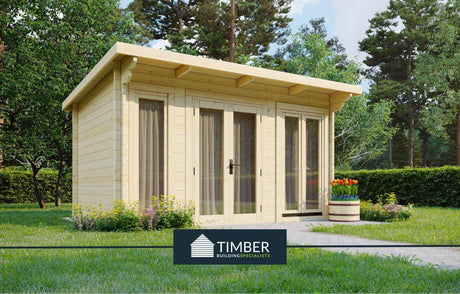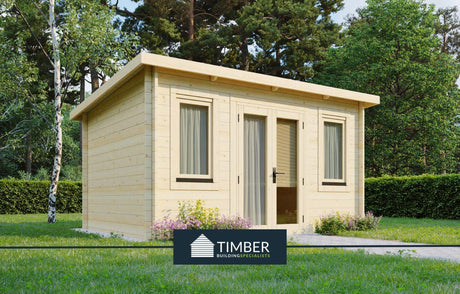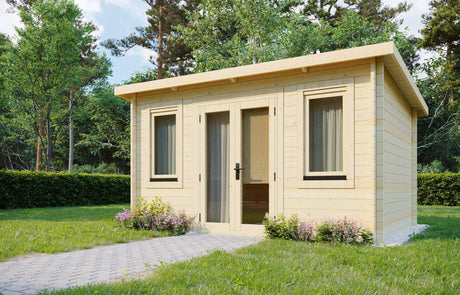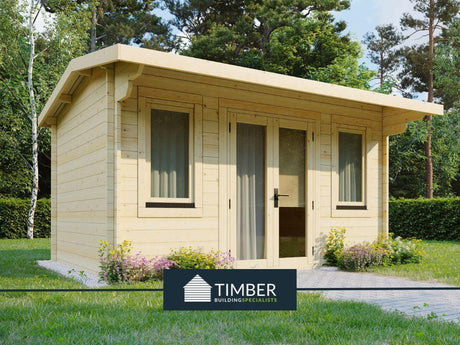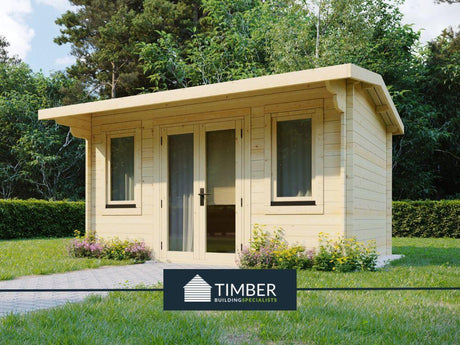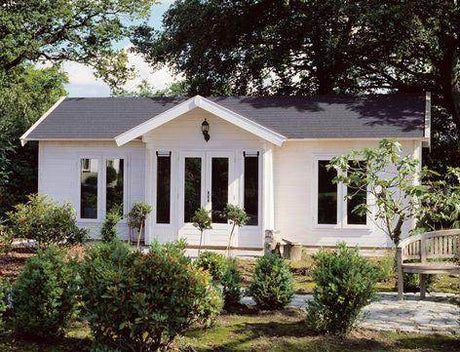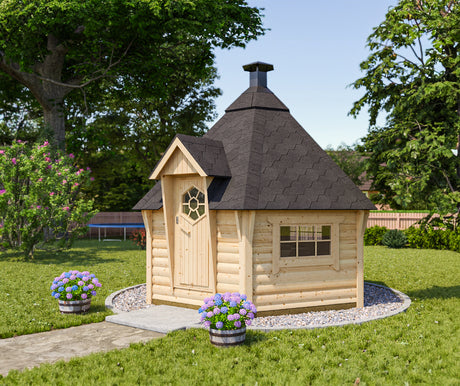Glulam - Glued laminated timber
Glued laminated timber , also called glulam , is a type of structural engineered wood product comprising a number of layers of dimensioned lumber bonded together with durable, moisture-resistant structural adhesives.
Glued laminated timber – glulam – is manufactured by bonding together individual laminations of solid timber. This produces members of rectangular cross-section that are larger and longer than may be obtained simply by sawing a normal log. Glulam is readily available , extremely reliable and very adaptable in design.
Except where curvature in plan is required, horizontal glulam is the usual product, but when necessary, additional operations lead to a variety of cross-sections and curved shapes. Pre-fabricated structural components are regularly manufactured from glulam.
By laminating a number of smaller pieces of lumber, a single large, strong, structural member is manufactured from smaller pieces. These structural members are used as vertical columns or horizontal beams, as well as curved, arched shapes. Glulam is readily produced in curved shapes and it is available in a range of species and appearance characteristics to meet varied end-use requirements. Connections are usually made with bolts or plain steel dowels and steel plates.
Glulam optimises the structural values of a renewable resource – wood . Because of their composition, large glulam members can be manufactured from a variety of smaller trees harvested from second- and third-growth forests and plantations. Glulam provides the strength and versatility of large wood members without relying on the old growth-dependent solid-sawn timbers. As with other engineered wood products, it reduces the overall amount of wood used when compared to solid sawn timbers by diminishing the negative impact of knots and other small defects in each component board.
Glulam has much lower embodied energy than reinforced concrete and steel, although it entails more embodied energy than solid timber. However, the laminating process allows timber to be used for much longer spans, heavier loads, and complex shapes. Glulam is one tenth the weight of steel and one sixth the weight of concrete – the embodied energy to produce it is one sixth of that for a comparable strength of steel. Glulam can be manufactured to a variety of straight and curved configurations so it offers architects artistic freedom without sacrificing structural requirements.
The high strength and stiffness of laminated timbers enable glulam beams and arches to span large distances without intermediate columns, allowing more design flexibility than with traditional timber construction. The size is limited only by transportation and handling constraints.
Glulam versus steel
A 2002 case study comparing energy use, greenhouse gas emissions and costs for roof beams found it takes two to three times more energy and six to twelve times more fossil fuels to manufacture steel beams than it does to manufacture glulam beams. It compared two options for a roof structure of a new airport in Oslo, Norway – steel beams and glulam spruce wood beams. The life cycle greenhouse gas emission is lower for the glulam beams. If they are burned at the end of their service life, more energy can be recovered than was used to manufacture them. If they are landfilled, the glulam beams are a worse alternative than steel because of the methaneemission. A more recent study by Chalmers University of Technology was not so optimistic. Nevertheless, it showed that while the absolute greenhouse emissions are strongly dependent on the method used to calculate them, the environmental profile of glulam is typically as good or better than steel in an example structural application. The cost of the glulam beams is slightly lower than the steel beams.
Glulam Definition
The definition indicating that glulam is obtained by bonding laminations that are essentially parallel is given in BS EN 386. It distinguishes this structural timber composite from others such as cross-laminated timber, whose layers are created rather like those in plywood, but forming them from sliced solid timber or even in some cases from re-sliced glulam.
Glulam is a type of material classified in North America as Engineered Wood, but here in Europe, the term “wood” is not used for structural material but only when making botanical or wood science references. As indicated by the structural codes of practice and their supporting standards, these always deal with Structural Timber, of which glulam forms a vital part.
Although Glued Laminated Timber and Glulam are the established names of this material, a number of other similar but less-preferred terms are found, including Glue-laminated Timber , Glue-lam, Gluelam, etc.

